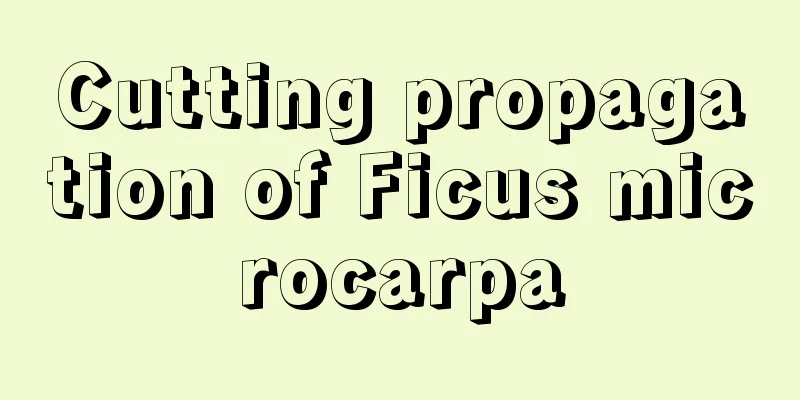8 kinds of plants that are grown hanging up will make even the green radish and the spider plant look weak

Lipstick ChlorophytumThe flower shape of lipstick spider plant resembles lipstick, which is very popular among people. It is an ideal hanging ornamental plant for home use. Maintenance points:1. Lighting It likes a semi-shady environment. Except for the strong light at noon in midsummer, which should be properly shaded, it should be given sufficient light at other times of the year, especially in winter. If the leaves are placed in a location where the light is too strong or insufficient, they will easily turn light green or yellow-green. 2. Watering The potting soil should always be kept moist, and water should not accumulate in the pot to avoid root rot. During the peak growth period from March to September, the plant requires a lot of water, so watering and spraying are required frequently to increase humidity. As the weather gradually gets cooler in autumn, the amount of watering and fertilization should be gradually reduced. The soil in the pot should be slightly dry in winter. 3. Tips for pruning When the growth is vigorous, you can pinch the top appropriately to promote branching. After the winter flowering period, the remaining stems that have bloomed should be cut off in time to save nutrients, promote the growth of new branches, and produce more buds and flowers. NasturtiumUnder suitable environmental conditions, it can bloom all year round. A flower can last for 8-9 days, and the whole plant can bloom dozens of flowers at the same time. They are fragrant and colorful, winning people's love. Maintenance points:1. Lighting Nasturtium likes sunlight and should be placed in a sunny place in spring and autumn. It needs appropriate shade in summer and the room temperature should be kept at around 15℃ in winter. With sufficient sunlight, it can continue to grow and develop. 2. Watering In spring and autumn, water the plants every other day, and in summer, water them once a day to maintain a high air humidity. When flower buds appear, the frequency of watering should be reduced appropriately, but the amount of watering should be increased each time so that the soil in the pot is sometimes dry and sometimes moist. Watering should be reduced after flowering. BegoniaPotted begonias are often used to embellish living rooms, display windows, or decorate home windowsills, balconies, coffee tables and other places. They have various flower shapes and soft leaves. Maintenance points:1. Moisture Begonia requires sufficient water and high humidity to grow. In addition to supplying sufficient water during the growth period, it should also be sprayed several times a day. Growth is slow in winter, so the supply can be relatively reduced. 2. Lighting Begonia is suitable for cultivation in a greenhouse, with appropriate shade, preferably diffuse light. Hanging GeraniumGeranium has strong adaptability, bright colors and a long flowering period, making it suitable for indoor placement and flower bed arrangement. Maintenance points:1. Temperature The most suitable temperature for geranium is 10-20 degrees Celsius, which is spring and autumn. Winter is too cold and summer is too hot. So in the summer, be sure to prevent it from being exposed to the sun and put it in a cool place. 2. Moisture It is taboo to water geraniums too much. If you find that the roots of geraniums are rotten, it may be due to excessive watering and hot weather. The frequency of watering should be controlled to once every three or two days. Each time you water, use a large amount of water to ensure thorough watering. 3. Lighting Adequate sunlight helps geraniums bloom, but if the temperature is too high, they should not be exposed to direct sunlight. In spring and autumn, they should be exposed to more sunlight. In summer, pay attention to the temperature. If the temperature is too high, geraniums should be avoided from light. FuchsiaMaintenance points:1. Lighting It prefers a semi-shady environment, but has different light requirements in different seasons. It needs full sun in winter, early spring and late autumn, half sun in early summer and early autumn, and shade in midsummer. 2. Temperature The temperature for the growth of fuchsia is 10-28℃. The temperature in summer should not exceed 30℃. At 35℃, a large number of them will wither and die. Therefore, cooling work should be done in summer. In winter, sufficient sunlight is required and the cultivation temperature should not be lower than 5℃, otherwise it will cause frost damage and insulation measures must be taken. 3. Humidity Spray water on the leaves and sprinkle water on the ground several times a day to reduce the temperature and increase air humidity. PetuniaMaintenance points:1. Lighting It likes light and should be placed in a place with sufficient light when maintaining it. 2. Moisture During the peak growth period in summer, sufficient water is needed, especially in the high temperature season in summer, water should be poured in the morning and evening to keep the soil moist. However, during the rainy season, there is a lot of rain, which is very unfavorable for the growth of petunias. If the soil in the pot is too wet, the stems and leaves will easily grow too long. If there is a lot of rain during the flowering period, the flowers will easily fade or rot. If the potting soil is waterlogged for a long time, the roots will rot and die, so loose, fertile and well-drained sandy loam is suitable for potted petunias. Six times profitWhen the six-leaf lily blooms, the plant is almost completely covered with flowers, which is very beautiful. Growth habit:It will bloom only in a long-day, low-temperature environment. It is not very cold-resistant, avoids extreme heat, and likes loose loam rich in humus. VerbenaMaintenance points:It likes sunshine and is not shade-tolerant. It is relatively cold-resistant, has poor shade tolerance and is not drought-tolerant. It is mostly cultivated as an annual herbaceous flower in the north and can bloom normally in the hot summer. It grows in plenty of sunlight, loose and fertile soil and blooms luxuriantly. Flower lovers, do you know any other flowering plants that can be hung? |
<<: Does the toilet always have a bad smell? don’t worry! 10 plants to instantly freshen the air
>>: 11 Flowering Plants That Can Be Grow Well Even If You're a Plant Killer
Recommend
Do I need to prune the roots when repotting Begonia? What should I pay attention to when repotting?
1. Do you need to repair the roots? When repottin...
How to make rose toothpick seedlings grow quickly and how to survive the winter
1. How to make rose toothpick seedlings grow quic...
How to eat yacon? Can pregnant women eat yacon?
1. How to eat 1. Eat raw: The taste of yacon is v...
Gardening tips for beginners
Tip 1. Choose suitable plant species according to...
Summer maintenance methods of Amaryllis
Moisture Amaryllis prefers a humid environment, b...
How to root Chinese evergreen in hydroponics
1. Direct Purchase One situation is that we buy t...
How to prune orchids
When to prune orchids In fact, there is no fixed ...
How to hydroponically cultivate aloe vera and what to pay attention to in later maintenance
1. How to hydroponically cultivate 1. Choose a co...
How to raise Jilongyue in winter
temperature When the indoor temperature is below ...
Cultivation method of Clivia
1. Potting soil The flower pots used for cultivat...
What to do if leaves fall during the frost season
The reason why the leaves fall in the frost morni...
Yunnan vegetable varieties Yunnan specialty vegetable varieties and pictures
Yunnan is the province with the largest number of...
Rubber tree cutting propagation methods and precautions
How to reproduce rubber tree The more commonly us...
Does asparagus fern need root pruning when repotting? How to repot asparagus fern
1. Do you need to repair the roots? It is usually...
How often should strawberries be watered?
1. How often should I water the plant? Strawberri...









